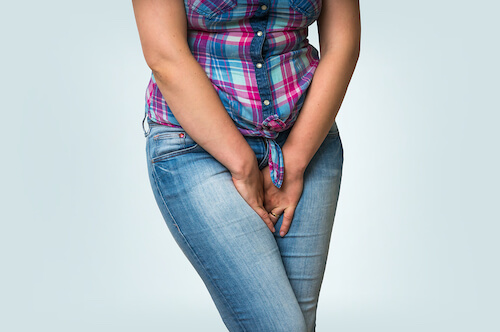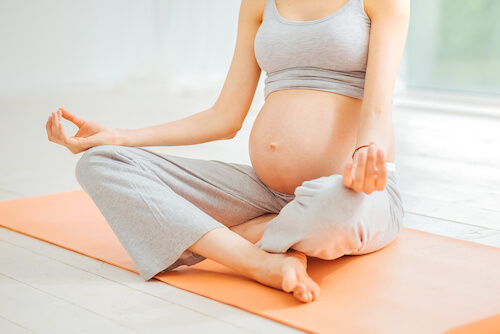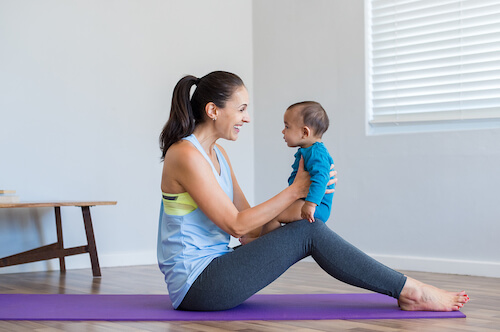If thoughts of pushing a tiny human out of a much tinier hole gives you bouts of anxiety or traumatic memories, take heart. While giving birth does affect a woman’s nether region, the vagina is actually quite resilient and capable of healing. There are many things we can do before and after birth to ensure our lady parts recover to their pre-pregnancy vigor and fitness. A bit of perinatal care of the vagina can help prepare and restore tender tissues and muscles.
I don’t have children, so I don’t have any personal first-hand experience with the changes that occur postpartum. So I asked my friend, Lydia Ojuka Riley, to share her experience and wisdom on the subject.
Time to Get Real
Vagina. There, let’s just get that out there along with other taboo words like “anus” and “urinary leakage”. Pelvic floor health has become something I’m now used to bringing up in casual conversation. I’m okay with that because the taboo nature of the topic is the single greatest reason for postpartum neglect and maltreatment of women.

When I had my first daughter 12 years ago, I had a relatively routine experience in a hospital. I only needed a little help getting the labor going, pushing as hard as I could while lying on my back, and leaving with a quickly stitched perineum and a cute little baby. I didn’t see the doctor again for 6 weeks, and after a quick exam, I was cleared for “everything”. My experience wasn’t particularly bad, especially when you consider that birth injuries are so incredibly common. However, I’ve come to learn that my care was in no way complete.
Pelvic Floor Rehab
I believe every single woman who carries a baby in her body needs postpartum pelvic floor rehab at minimum, no matter the method of delivery. (I’m looking at you, c-section mamas.) And every woman needs to see a pelvic floor physio as a routine part of annual wellness screens. This is important because gravity and tissue atrophy happen with age, so we’ve gotta stay on top of things. In many ways, perinatal care of the vagina is important to our quality of life.
During my second pregnancy, I planned to have an unmedicated birth. My anxiety about anything diminishes when I fill my head with knowledge, so I studied and familiarized myself with natural birth stories. I noted how many times the pelvic floor was mentioned and decided that an ounce of prevention is worth a pound of cure.

I also noted that in my mid 30s, stress incontinence, leakage, back pain, hip pain, and tummy dissatisfaction were becoming normalized. And not just in my intimate circle of friends, but as I would observe, this issue is much more widespread than I originally thought. For example, the pee-pee accidents of crossfitters on TV, retiring activity of mamas and grandmas all around me (because running means leaking), or friends sprinting to the bathroom during a particularly funny joke. Add to that the regular topic of dissatisfaction during intimacy for a number of reasons, including decreased sensation or pain. The medical solutions are extreme and unreliable. But doing just a bit more can enhance our quality of life as women.
Diastasis Recti
My own pelvic floor issues were my constant low back and hip pain and diastasis recti. This is a very common postpartum condition in which the abdominal muscles separate and don’t hold their shape. I’m athletic, so it bothered me that I experienced so much pain with movement. Plus my tummy didn’t reflect my fitness efforts; it just felt unsupported. I felt like something was off, but I didn’t know it all came down to my pelvic floor.
I’m sure there are tons of great doctors in hospitals, and not every midwife is as great as mine, but I have to give a little shout out here about the midwifery model of care. My postpartum care was outstanding. My midwife didn’t let me leave her care without checking my stitches several times in the weeks after my baby was born to make sure I was healing normally. She also verified that I had diastasic rectified and referred me to a pelvic floor specialist. This small thing absolutely saved me. I remember spending years after my daughter’s birth looking for the miracle ab system that would flatten my tummy.
Prevention is worth the effort.
If you are pregnant, learn about preparing your pelvic floor for birth. The better shape your muscles are in prior to birth, the faster they will bounce back afterwards. This is why perinatal care of the vagina is so vital. I saw a pelvic floor physio, but a virtual coach is another great option when you feel gynormous and don’t want to leave the house.

Learn how to kegel.
The saddest fact about my pelvic floor health is that I had not been properly kegel-ing my entire life. Most of us learn to focus on the squeeze; this is unfortunately incomplete. @vaginacoach has a few excellent queues for the kegel. An essential part of the kegel is connecting it to the belly breath. Once those connect, oh baby, you are on your way.
Learn about mother roasting.
Mother roasting is a practice embraced in many cultures around the globe, such as China, Japan, Mexico, Malaysia and Indonesia. It recognizes a new mother’s need to recover, rest, replenish and restore. Traditional mother roasting practices involve warm foods, gentle herbal massages with oils and warming balms, belly wrapping, and ample support.
Get a belly wrap.
Belly wrapping helps heal the postpartum pelvis and abdomen. It provides support to the healing pelvis and abdominal wall. It also encourages restorative posture and alignment, supports the uterus, improves circulation, and provides comfort and support.
It’s not always about making things tighter.
For those of us who feel like things changed as a result of pushing a watermelon out of our vaginas, we often put the emphasis on tightening things up. It surprised me that much of the pelvic floor programs include a decent amount of releasing tension. In the tailwind of kegel mania in which we all live, with everyone seeking tight yoga and pilates abs, its actually quite common to have excessive tightness that creates pelvic floor weakness. The truth is, a complete kegel also involves an open and release movement.


Lydia Ojuka Riley is a wife, mom, and plant mom. She enjoys blogging about wellness and spreading the joys of a non toxic life. Her hope is for all mamas to have the confidence to jump on the trampoline, cough and sneeze without the leg cross of desperation, laugh their heads off without worry, and have an enjoyable and healthy sex life for years and years to come.
Learn More
My midwife referred me to Bellies Inc. Education. There is a simple 6-week postpartum program that employs the “belly breath”, mother roasting, and ab wrapping. This is my favorite go-to resource for perinatal care of the vagina.
For some top tips for a healthy pregnancy and delivery, come check out Top 10 Tips for Every Expecting Mom from my friend Lindsey Meehleis!
Looking for a bit of pregnancy pampering? Come check out these Pampered Mama DIY Recipes!












